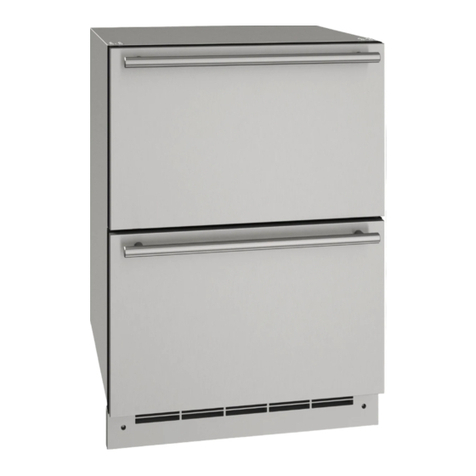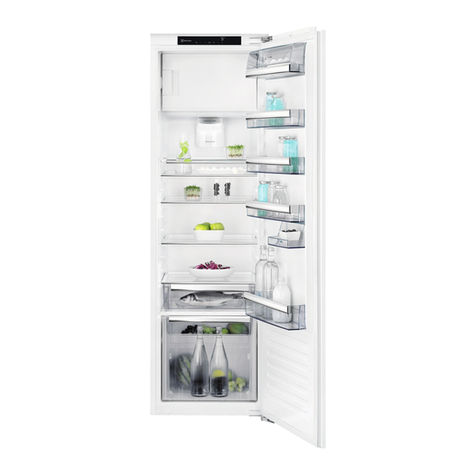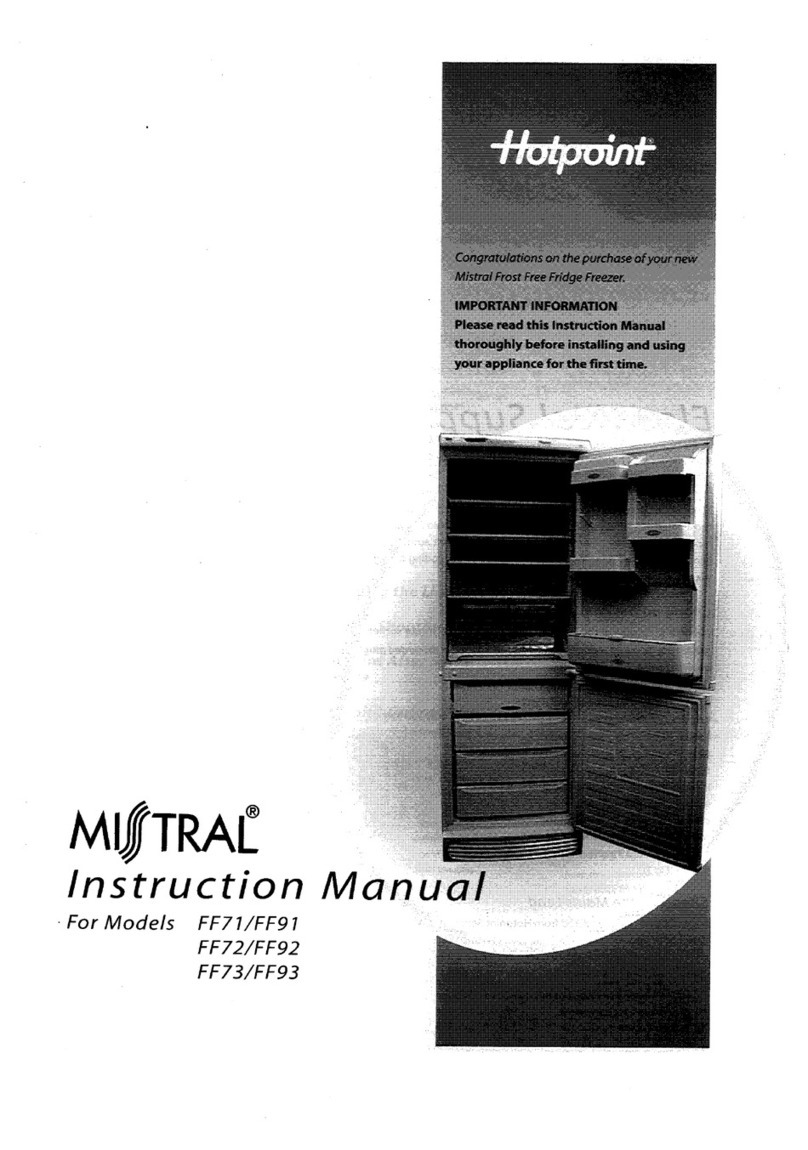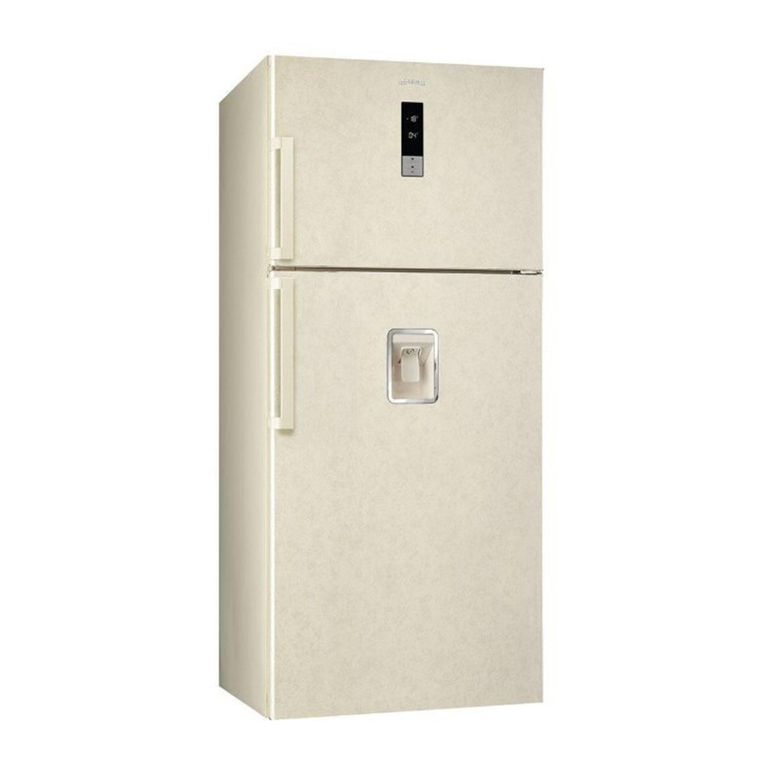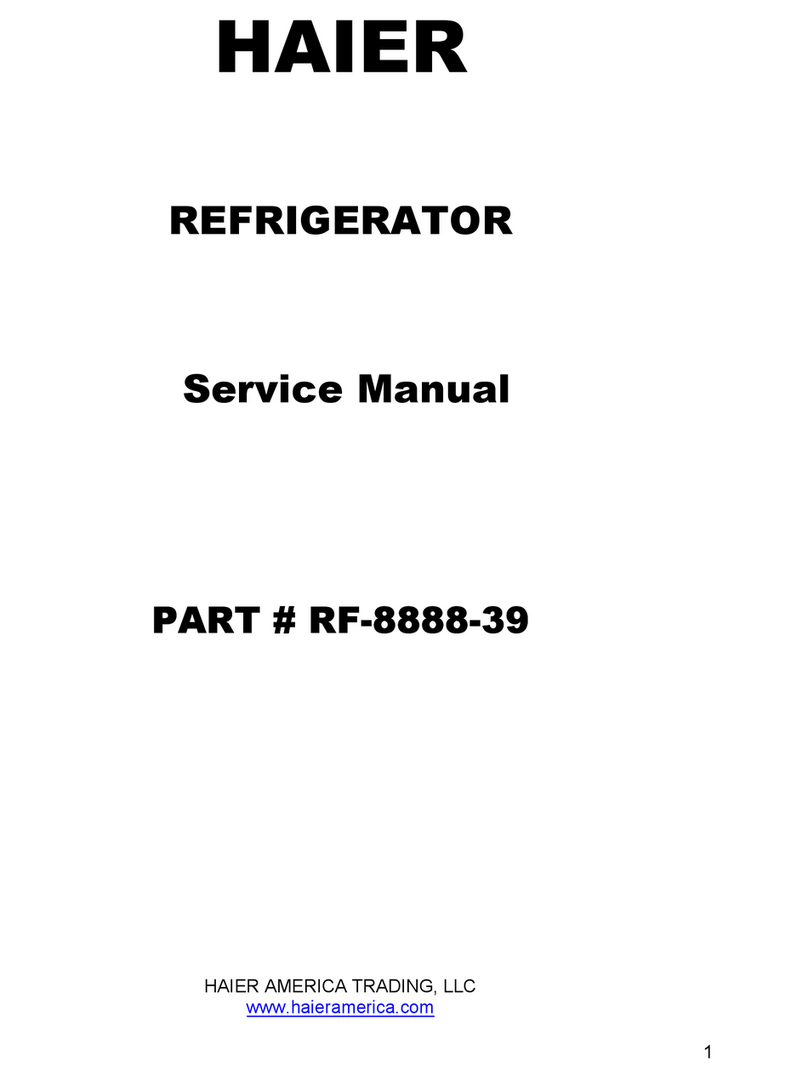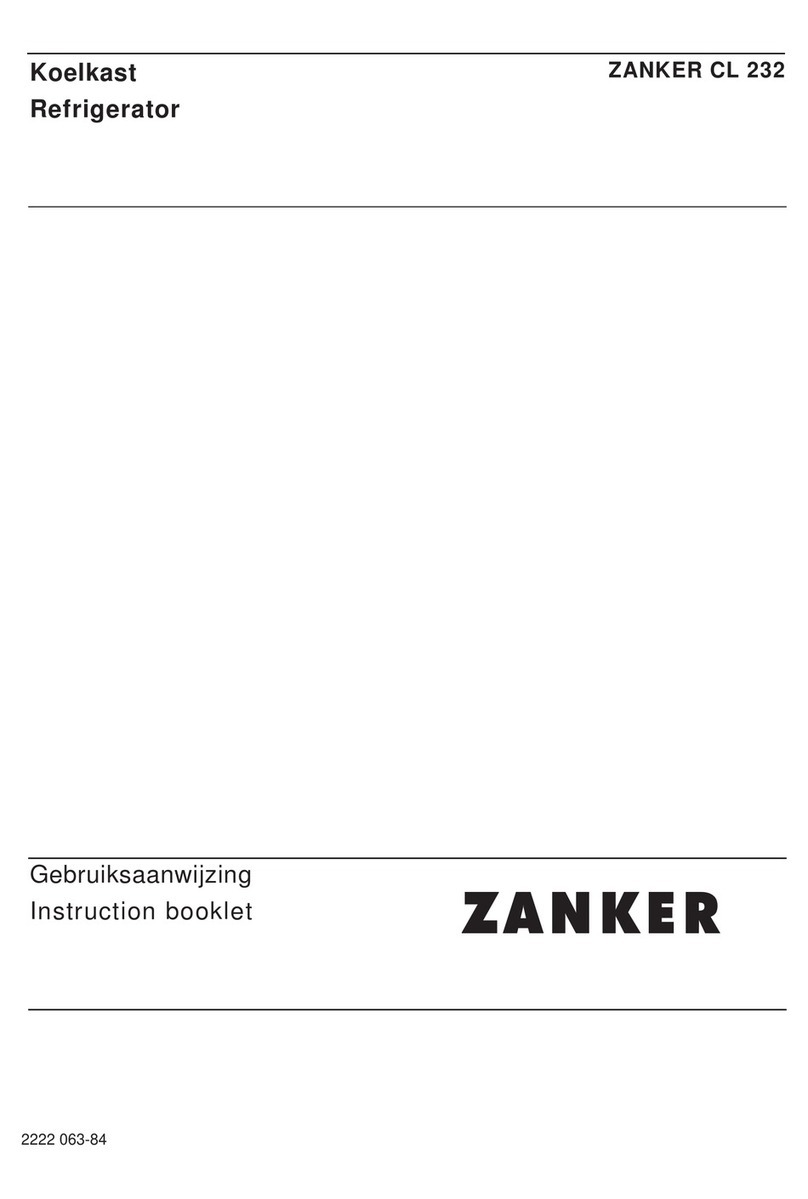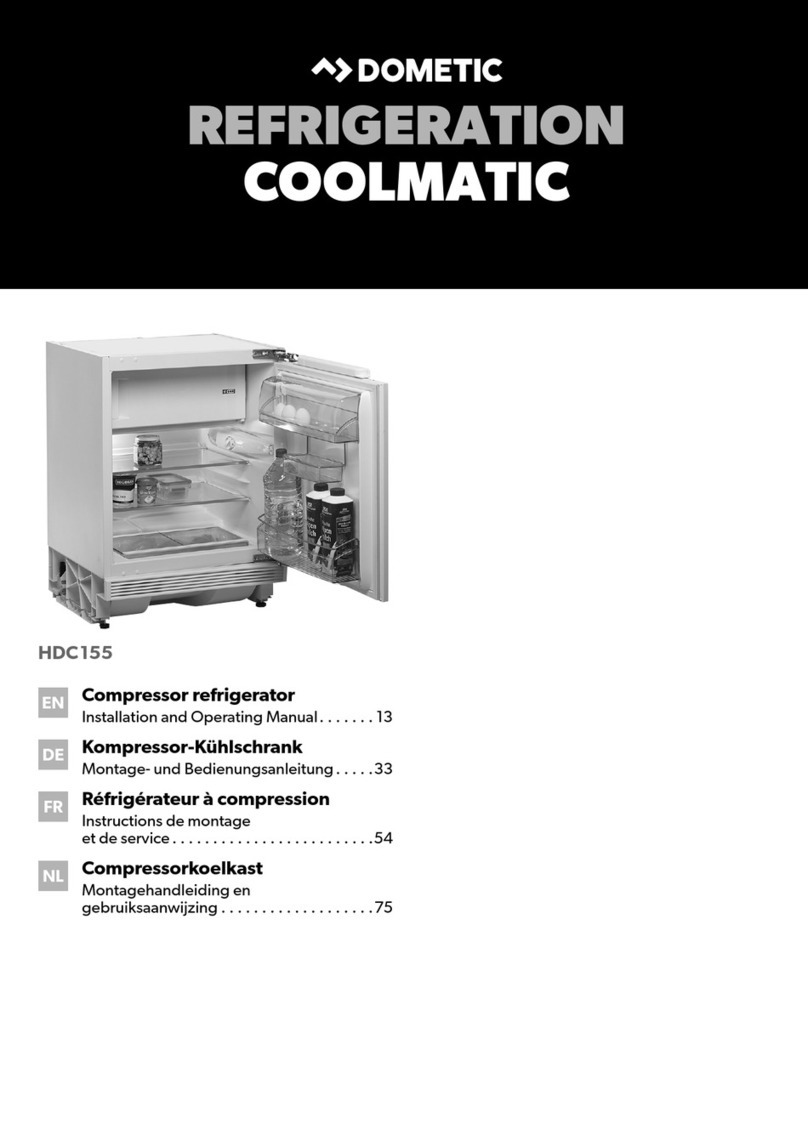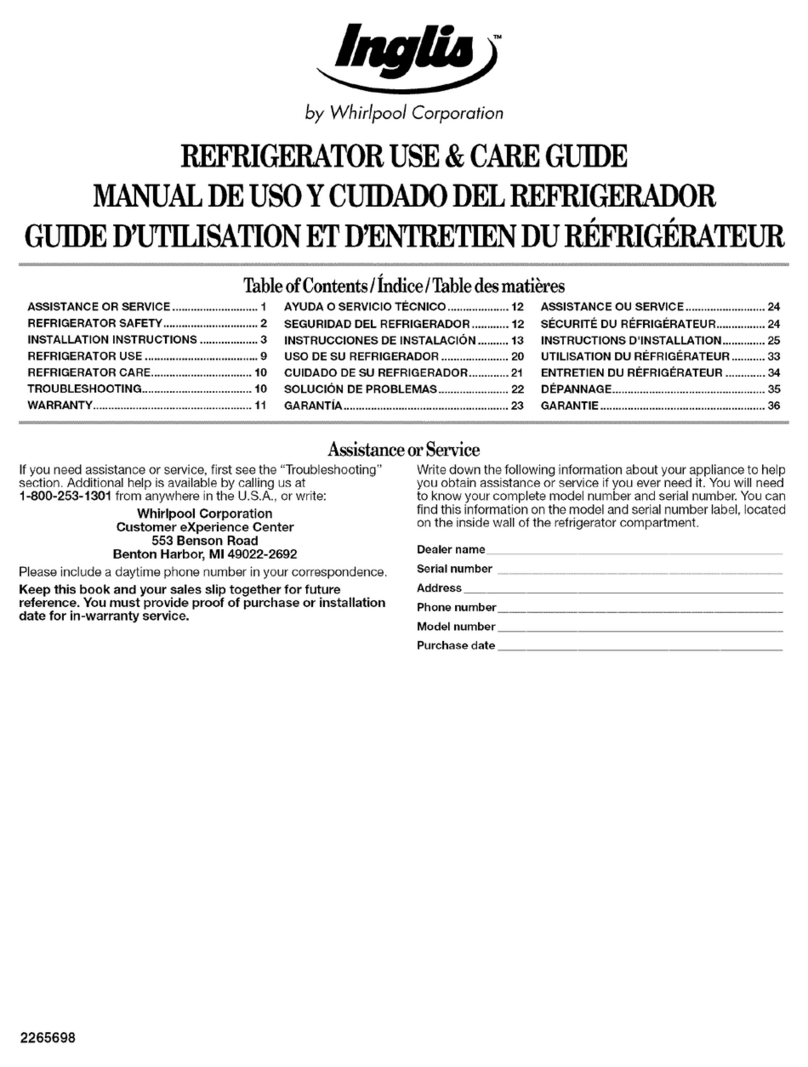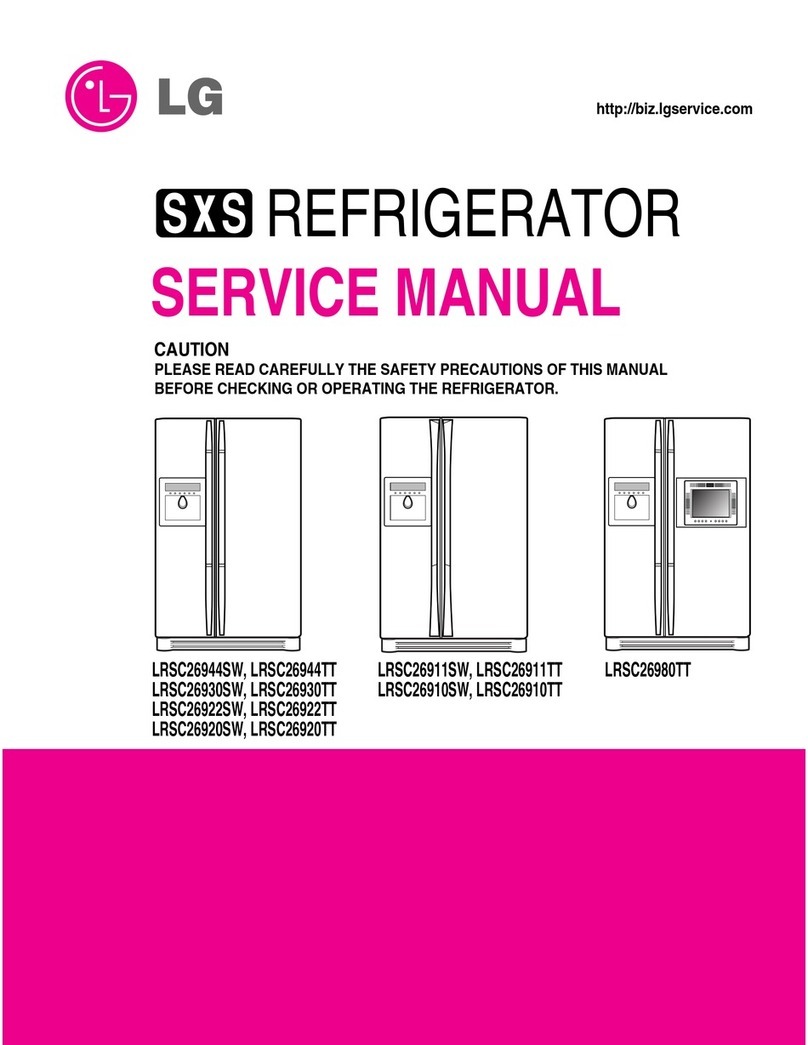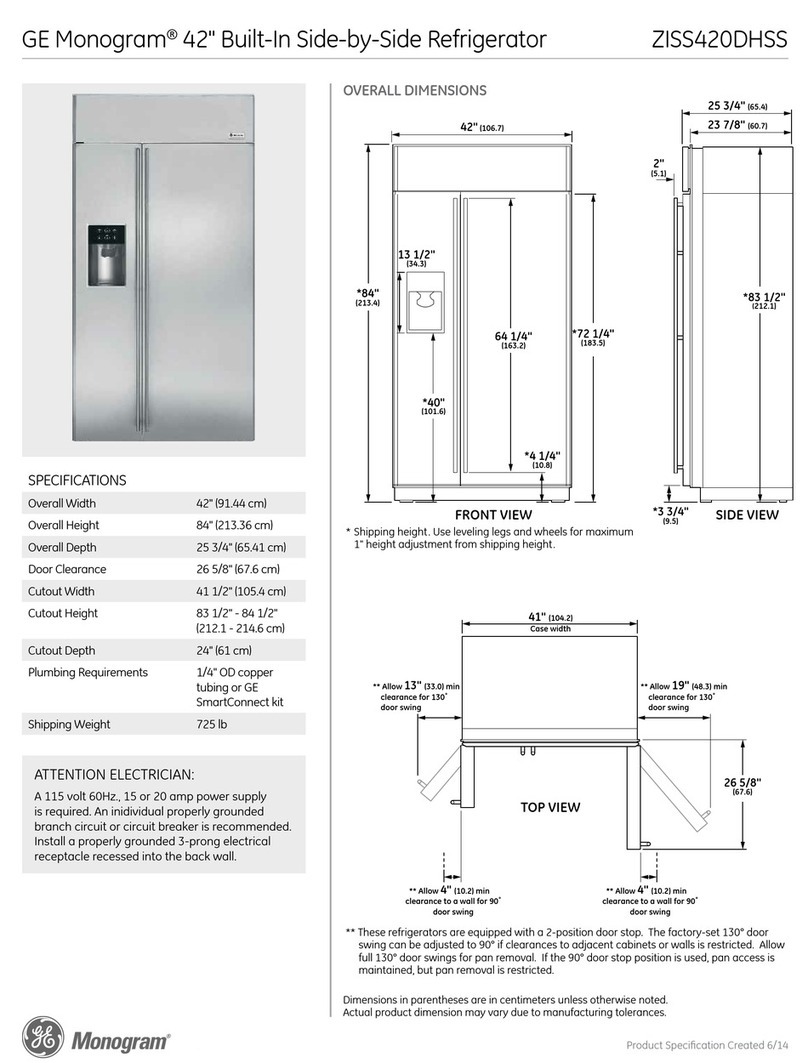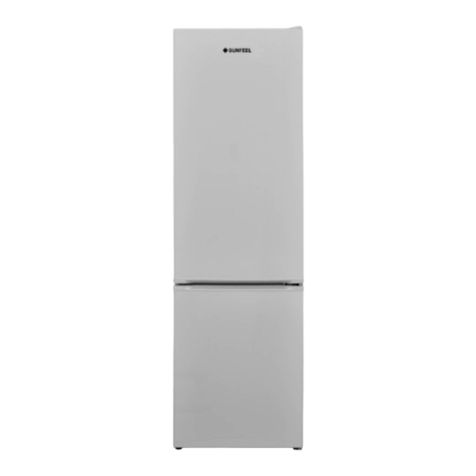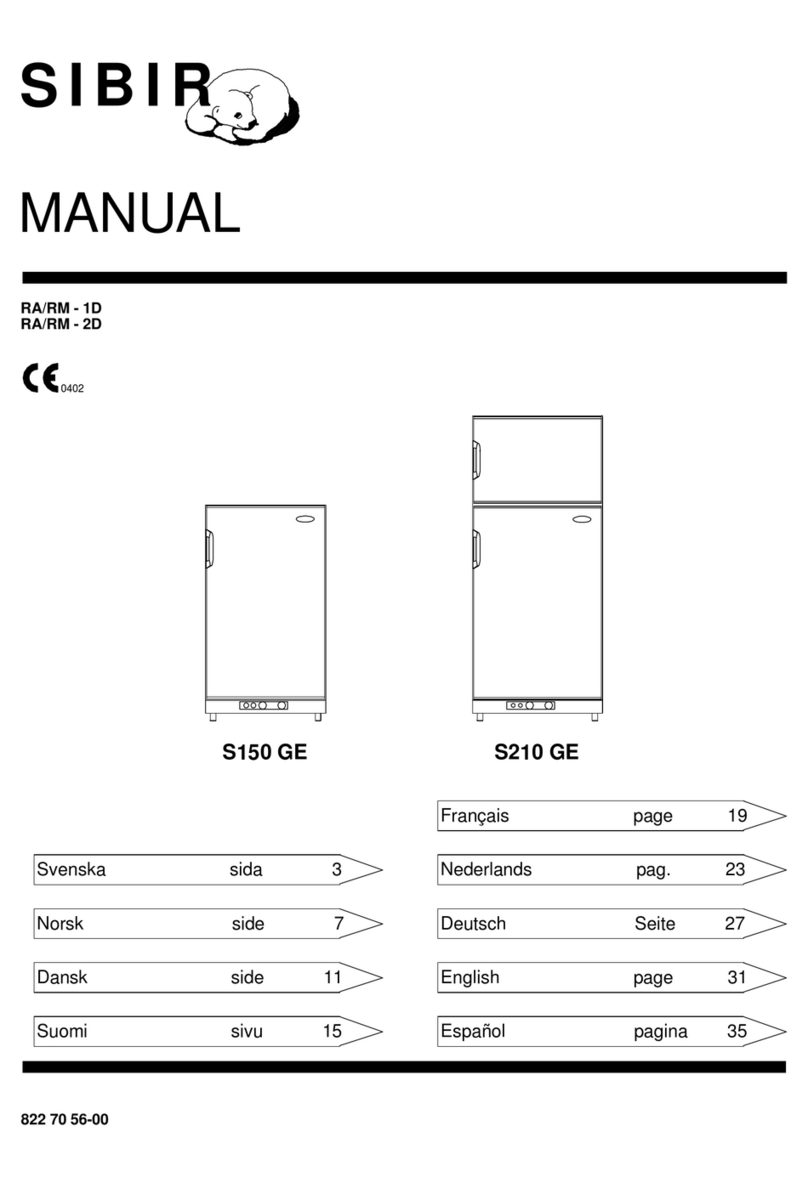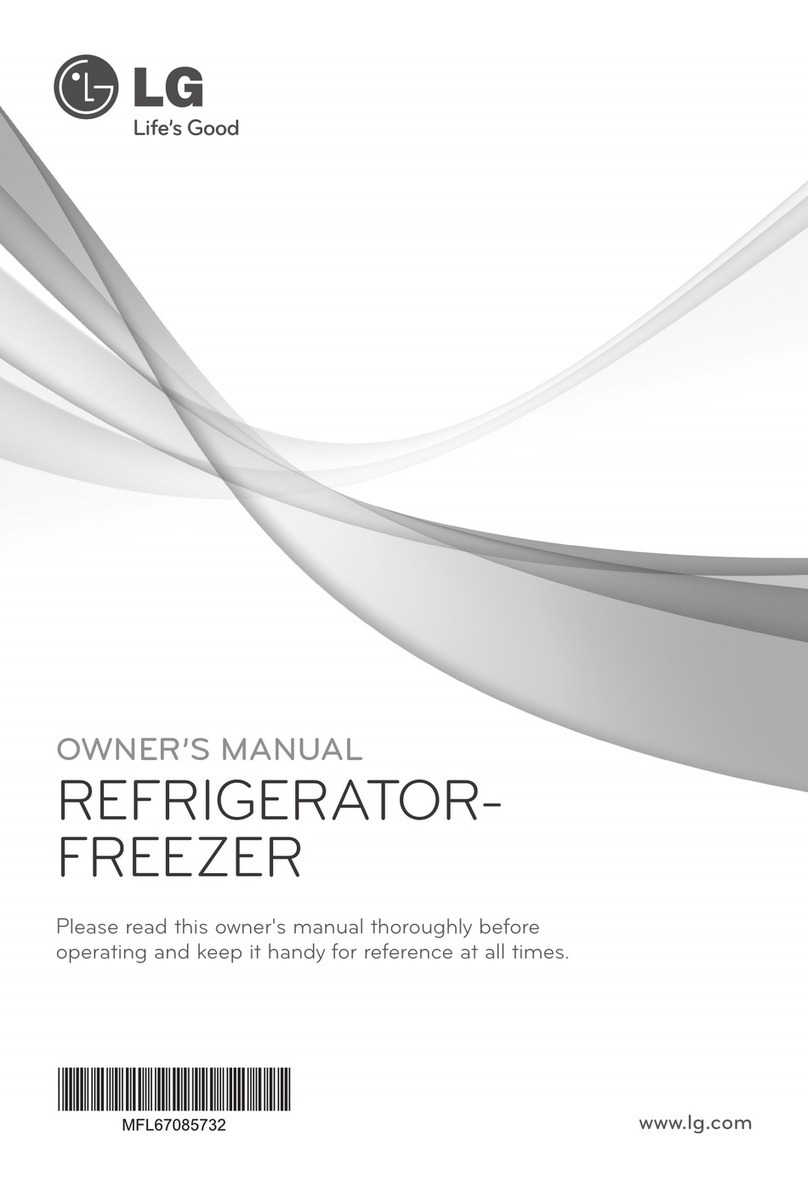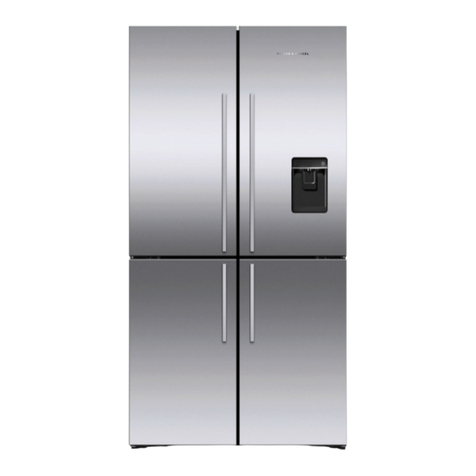SNAIGE R 130 User manual

Refrigerator with a freezer compartment
Instructions for Use
R 130

1
SAFETY INSTRUCTIONS
CAREFULLY READ THE INSTRUCTION MANUAL. If instructions are not
followed, there is a risk of injury, damage of the appliance and loss of the right to
free warranty service. We recommend to keep the Instruction manual the whole
time you have the appliance. When you sell the appliance pass the Instruction
manual to the new owner of the appliance.
WARNING!
–Do not cover the ventilation holes at the top and on the sides of the
appliance.
–Do not use any mechanical means or electrical devices to hasten the thawing
process when cleaning the freezer compartment.
–Do not use electrical appliances inside the food storage compartments of the
appliance, unless they are of the type recommended by the manufacturer.
–If the supply cord is damaged it must be replaced by the manufacturer,
manufacturer service agent or a similarly qualified person, in order to avoid a
hazard.
–Disposal of the appliance should be according to national rules.
–Do not damage the appliance refrigeration system. It contains the refrigerant
gas R600a. If the refrigeration system is damaged:
•Do not use any open flame.
•Avoid sparks―do not turn on any electrical appliances or lighting
fixtures.
•Immediately ventilate the room.
–Do not allow children to play with the appliance or to plug it in or unplug from
the electricity supply socket. Do not allow children to play with the packaging
material from the appliance.
–This appliance can be used by children aged from 8 years and above and
persons with reduced physical, sensory or mental capabilities or lack of
experience and knowledge if they have been given supervision or instruction
concerning use of the appliance in a safe way and understand the hazards
involved.
–Cleaning and user maintenance shall not be made by children without
supervision.
–The appliance should be used only for freezing and storing foodstuffs.

2
–This appliance is not designed for the storage of explosive substances such
as aerosol cans with a flammable propellant.
–It is prohibited to store petrol and other flammable liquids near the appliance.
CONNECTION TO THE MAINS
–The appliance should only be connected to an earthed socket installed in
accordance with the regulations. Make sure that the supply voltage
corresponds with the voltage marked on the rating label. This product
complies with all binding CE labelling directives.. The earthed electrical
socket by which the appliance is connected to the mains should be in an
accessible place.
–IF THE APPLIANCE IS PRODUCED WITH THE SPECIAL SUPPLY CORD
IT CAN BE EXCHANGED ONLY BY THE SAME SPECIAL SUPPLY CORD
PROVIDED BY THE MANUFACTURER.
–TO AVOID HAZARDS, DAMAGED POWER SUPPLY CORDS SHOULD
ONLY BE REPLACED BY THE MANUFACTURER, A MAINTENANCE
TECHNICIAN OR A PERSON WITH AN EQUIVALENT QUALIFICATION.
–DO NOT USE extension cords or connectors (adapters), or hubs.
–When positioning the appliance, be careful that the electrical cord isn’t
squeezed in order to avoid its damage. Do not store heavy objects such as
cooling devices, furniture or other domestic devices next the appliance in
such a way that they could squeeze and damage the electrical cord. This can
cause a short circuit and a fire.
–Make sure that the plug of the electrical cord is not squeezed by the back
wall of the appliance or otherwise damaged. A damaged plug can be the
cause of a fire!
•If the appliance is unplugged (for cleaning, moving to another place, etc.), it
may be repeatedly switched ON AFTER 15 MIN.
•It is forbidden to use a technically damaged appliance.
•The appliance can’t be disposed of by burning.
•Do not place any switched on electrical devices (such as microwave ovens,
hair dryers, irons, electric kettles or other electrical devices) on top of the
appliance because this may cause ignition of plastic parts.
•Do not place any dishes with liquids on top of the appliance and do not keep
flowers in vases or other liquid-filled vessels on the appliance.
•Do not climb on or sit on the appliance, do not lean on or hang on the
appliance doors and do not allow children to do this.

3
IF THE APPLIANCE IS OUT OF ORDER AND IT IS NOT POSSIBLE TO
REPAIR IT BY MEANS OF GIVEN RECOMMENDATIONS, UNPLUG IT,
OPEN THE DOORS AND CALL THE SERVICE EXPERT. ONLY A
SERVICE REPRESENTATIVE CAN REMEDY ALL TECHNICAL OR
CONSTRUCTION FAULTS.
ENVIRONMENTAL PROTECTION INFORMATION
This symbol indicates that once the appliance is no longer needed, it cannot
be disposed together with other miscellaneous municipal waste. It should be
collected and eliminated separately, i.e. in containers specially marked with
this symbol in large-dimension rubbish collection areas. Full information on
where to submit the old appliance safety can be obtained from local
government authorities, the shop where you bought the appliance or the
manufacturer’s representatives.
If you decided to scrap the appliance, make it impossible to use in order to prevent
possible misadventure. Pull out the electric plug from the electricity supply socket and
then cut off the cord. Tear off the gasket. Break the door lock if any.
WARNING! Do not dismantle the appliance yourself. Pass it on to recycling
companies.
GENERAL INFORMATION
The appliance consists of a refrigerator with a freezer compartment. Fresh food
products can be stored for a short while in the refrigerator, and food products can be
frozen and stored for longer periods in the freezer compartment.
THE APPLIANCE IS ECOLOGICALLY CLEAN, CONTAINING NO MATERIALS HARMFUL TO
THE OZONE LAYER: the refrigerant used is R600a, the foaming agent used for the
appliance insulation is cyclopentane C5H10.
THE MANUFACTURER GUARANTEES RELIABLE OPERATION OF THE REFRIGERATOR
WHEN THE RELATIVE AIR HUMIDITY NOT GREATER THAN 70 PER CENT AND THE
AMBIENT TEMPERATURE IS:
+16 TO +32 DEGREES CELSIUS (Climate class N);
+16 TO +38 DEGREES CELSIUS (Climate class ST);

4
Product data sheet
Model
R 130
Category ¹)
7
Energy efficiency class ²)
A+
Annual energy consumption ³), kWh/in year
Actual consumption will depend on how the appliance is used and where it is located
Refrogerator net volume , L
97
Freezer compartmen net volume , L
17
Frost-free: refrigeration unit
yes
Frost-free: freezer unit
no
Freezing capacity, kg/24h
2
Power cut safe, h
14
Climate class⁵)
N-ST
Dimensions (H/W/D), cm
85 / 56 / 60
Noise level, dB(A) re 1pw
39
Construction
Freestanding
Electrical Data
see in the product label
NOTE. The manufacturer reserves the right to make future changes to technical
parameters and specifications.
¹)
1 = Refrigerator with one or more fresh-food storage compartments,
2 = Refrigerator-cellar, Cellar and Wine storage appliances,
3 = Refrigerator-chiller and Refrigerator with a 0-star compartment,
4 = Refrigerator with a one-star compartment, 5 = Refrigerator with a two-star compartment,
6 = Refrigerator with a three-star compartment, 7 = Refrigerator-freezer,
8 = Upright freezer, 9 = Chest freezer, 10 = Multi-use and other refrigerating appliances
²)
A+++ (most efficient) to D (least efficient)
³)
Annual energy consumption (AE C ) in kWh per year, based on standard test results for 24 hours.
Actual energy consumption will depend on how the appliance is used and where it is located.
4)
1 One-star compartment with nominal temperature of -6°C
2 Two-star compartment with nominal temperature of -12°C
3 Three-star compartment with nominal temperature of -18°C
4 Food freezer compartment (four-star compartment) with nominal temperature of -18°C
⁵)
Climate class: This appliance is intended to be used at an ambient temperature between lowest and
highest temperature: SN = 10°C-32°C, N = 16°C-32°C, ST = 16°C-38°C, T = 16°C-43°C

5
DESCRIPTION OF THE APPLIANCE, BASIC PARTS
PREPARING THE APPLIANCE FOR OPERATION
It is recommended to prepare the appliance for operation with a helper.
•Remove package. Lift the appliance away from foamed polystyrene base. Your
appliance is fit with screwed handles to not rise or push it taking by
handles. Handles may break. Tear off adhesive tapes.
•Remove the red packing materials from the shelves (fig.
2). Tear the red tape off the door tubs —this is just for
when the appliance is being
transported.
Check that the door latch
catches on the hook of the
plate.
•If the appliance is brought in from the cold (temperature is not
higher than +12 °C), you should wait for two hours
before connecting it to the mains.
•The appliance should not be connected to the mains until
all packing and transport materials aren’t removed. Suitably
dispose the packaging material
1
Freezer compartment
7
Door trays
2
Interior light block
8
Egg tray
3
Termostat knob
9
Thaw water channel cleaner
4
Adjustable height shelves
10
Condenser
5
Glass shelf
12
Thaw water drip tray
6
Fruit and vegetable boxes
11
Compressor

6
POSITIONING
•Place the appliance in a dry, well ventilated room.
WARNING! The appliance should not be operated in an unheated room
or porch. Place the appliance away from heat sources such as kitchen
stove/oven, radiators, or direct sunlight.
WARNING! The appliance must not touch any pipes for heating, gas or
water supply, or any other electrical devices.
•Do not cover the ventilation holes at the top of the appliances
–it must be a good air circulation around the appliance. There
should be a gap of at least 10 cm between the top of the
appliance body and any furniture that may
be above it. If this requirement is not
followed, the appliance consumes more
electrical energy and its compressor may
overheat.
•If you are positioning the refrigerator in a
corner, leave a gap of at least 1 cm
between the wall and the body of the
appliance so that the refrigerator door opens enough.
•The appliance must stand on a level surface and must not
touch the wall. If necessary, regulate the height of the
appliance by adjusting the levelling feet: by turning them
clockwise –the front of the appliance rises, by turning them
counter clockwise –it comes down. If the appliance is tilted
slightly backward –the doors will close by themselves.
TEMPERATURE REGULATION
The temperature in the refrigerator compartment is controlled using the thermostat
knob 2 (fig. 1) by turning it to one side or the other. The temperature indication in
digits is shown beside the thermostat knob.
The temperature is regulated on the scale of seven digits.
0= Compressor is switched off. WARNING! Electric current is not switched off.
1= highest temperature (lowest cooling)
7= lowest temperature (highest cooling)
If foodstuffs in the refrigerator compartment are too cold, set the thermostat knob to 1,
2or 3. If foodstuffs in the refrigerator compartment are not being chilled sufficiently,
set the thermostat knob to 4, 5or 6. Please set the desired temperature in the
appliance according to your own requirements!
THE TEMPERATURE IN THE REFRIGERATOR COMPARTMENT MAY VARY
DEPENDING ON AMBIENT TEMPERATURE, THE AMOUNT OF FOODSTUFFS, THE
TEMPERATURE OF THE FOODSTUFFS, AND HOW OFTEN THE APPLIANCE
DOORS ARE OPENED AND CLOSED. Therefore we recommend:
•locate the appliance away from heat sources,

7
•do not put hot foodstuffs in the refrigerator
compartment –they must be cooled down to room
temperature,
•appliance door must not to be left open,
•the appliance door should not be open longer than it is
necessary to take out or put in foodstuffs.
ATTENTION! To prevent frost from forming too quickly on the
freezer compartment evaporator and doorframe, make sure the
freezer compartment door is shut properly.
IF THE ROOM IS COOL, THE APPLIANCE COOLS LESS. THE
TEMPERATURE IN THE APPLIANCE MAY THEREFORE RISE. Use
the thermostat wheel to set a lower temperature.
FREEZING OF FOODSTUFFS
In the freezer compartment the fast-freeze section is marked with the symbol
Food to be frozen should first be allowed to cool off to room temperature and then
should be placed in one row at the bottom of the freezer compartment. Set the
thermostat knob to setting number 7. When the products are frozen after 24 hours,
the thermostat wheel should be set at its earlier position.
•DO NOT EXCEED THE MAXIMUM AMOUNT OF FROZEN FOOD INDICATED IN THE
PRODUCTS DATA SHEET.
•Leave a gap of not less than 3 cm between the foodstuffs being frozen and the upper
partition.
•Do not place unwrapped foodstuffs in the freezer sections.
•Fresh food for freezing should not touch already frozen foodstuffs.
•Do not freeze foodstuffs that are warmer than the room temperature.
•Do not freeze liquid foodstuffs in glass vessels or bottles. Do not freeze
carbonated beverages.
•Strictly observe the frozen foodstuffs validity dates indicated by the manufacturer on
the their packaging.
WE RECOMMEND THAT FROZEN FISH AND SAUSAGE SHOULD BE STORED IN THE
FREEZER COMPARTMENT NOT LONGER THAN 6 MONTHS; CHEESE, POULTRY, PORK,
LAMB –NOT MORE THAN 8 MONTHS; BEEF, FRUIT AND VEGETABLES –NOT
LONGER THAN 12 MONTHS.
DEFROSTING
THE REFRIGERATOR COMPARTMENT defrosts automatically. Drops of ice that form on
the back wall of the refrigerator compartment thaw during the time the compressor is
not working and the thaw water runs down the thaw water runoff channel to the tray
on top of the compressor (Fig. 1), where it evaporates.
FREEZER COMPARTMENT should be thawed not less than twice a year or when a layer
of ice thicker than 5 mm forms in it. Do the actions below in the order they are listed:

8
WARNING! Turn the appliance off and pull the plug out of the
electrical socket.
•Remove foodstuffs from freezer compartment. The frozen foodstuffs will not warm
up too much while you are thawing the freezer compartment if you cover them with a
thick cloth and keep them in a cool place.
•Leave door of appliance open. When the ice melts, clean and wipe dry the surfaces
and fixtures of the refrigerator and freezer compartments.
•Close the freezer compartment door. Check that the door latch catches on the
hook of the plate. Plug in and turn on the appliance.
CLEANING AND CARE
REGULARLY CLEAN THE APPLIANCE.
Remember that before defrosting the appliance and cleaning
the back part of the appliance body you must disconnect the
appliance from the electrical energy supply socket by pulling the
plug out of the electricity outlet.
•Protect the appliance inner surfaces and plastic parts from fats, acids and sauces. In
case of accidental spills –immediately clean with warm soapy water or dishwashing
detergent. Wipe dry.
•Clean the appliance inner surfaces with warm soapy water. Dishwashing detergent
may also be used.
•Wipe dry inner and outer surfaces.
•Regularly clean the hermetic gaskets of the doors. Wipe dry.
•REGULARLY CLEAN THE THAW WATER CHANNEL SPACE IN THE
REFRIGERATOR WITH A SPECIAL CLEANER 9FOR THAT PURPOSE
(see fig. 1).
•At least once a year clean dust away from the back part of the
appliance body and the compressor. A soft brush, electrostatic
cloth or vacuum cleaner may be used for cleaning (see fig.).
•DO NOT use detergents containing abrasive particles, acid, alcohol
or benzene for cleaning the appliance inner and outer surfaces.
DO NOT use for cleaning cloths or sponges that have coarse
surfaces intended for scrubbing.
PRACTICAL TIPS AND OBSERVATIONS
•Strictly observe the foodstuff validity time indicated by the manufacturer on the
product packaging.
•Do not keep bananas in the refrigerator –these fruits are sensitive to cold.
•Do not keep prepared food and ready-to-cook (“heat and eat”) food in the same
container.
•Store in an airtight container in the appliance any foodstuffs that have a strong odour
(e.g. fresh fish, pâté de foie gras goose liver pâté, and cheese).

9
•Frozen foodstuffs should be thawed in the refrigerator compartment. Food that thaws
slowly retains better flavour properties and spread cold will help to maintain the set
temperature in the refrigerator compartment.
•Do not consume ice made in the freezer compartment straight away.
•Products will freeze more quickly if they are divided up and packed in small portions.
•IF THE A PPLIAN C E I S TO BE LEFT SWITCHED O F F FOR AN EXT ENDED
PERI OD , LEA V E I TS D O ORS OPEN.
Remarks o n t h e a p pli a n c e operatin g noise. As the appliance
operates and goes through the freezing cycle, various noises will be emitted.
This is normal and is not a sign of any malfunction.
As the refrigerant circulates around the refrigeration system, it causes sounds like
murmuring, bubbling, or rustling. Louder sounds like popping or clicking may be heard
for a short time as the refrigerator’s compressor switches on.
CHANGING THE OPENING DIRECTION OF THE DOORS
It is recommended that changing the opening direction of the doors should be done
with a helper. You will need two spanners No. 8 and No. 10 and a head screwdriver.
! When changing the opening direction of the doors, YOU CAN NOT lay the refrigerator
horizontally. Do the actions below in the order they are listed:
WARNING! Turn off the appliance
and pull the plug out of the
electricity supply socket.
1. Remove support 1and undo
screws 2.
2. Undo the two screws 3that hold
the pull-out shelf. Remove pull-out
shelf 4.
3. Remove the bracket (5) and its
washers from the axle.
4. Unscrew the axle together with its
washers from the bracket (5) and
screw it into the second aperture
of the bracket (5).
5. Remove the refrigerator door (6).
6. Change the opening direction of the freezer compartment door: open the door (7),
undo the screw (8), and remove the plate (9).
7. Undo the screw
(10) and
remove the
bracket (11).
8. Pull the door (7)
downward and
remove it.
9. In the places
indicated on the
other side of the
refrigerator

10
compartment, drill two 2.3-mm-wide holes and attach the plate (9) on the right-
hand side.
10. Turn the door upside-down (180 º) and place the upper axle of the door in the gap
on the left-hand side of the refrigerator compartment and hang the bracket (11) on
the bottom axle of the door. Attach the bracket (11) in the newly drilled hole.
11. Check that the door latch catches on the hook of the plate (9).
12. Take the cap (12) off the refrigerator door and press it into position on the opposite
side.
13. Remove the bracket (13) and its washers from the axle. Unscrew the axle by
twisting it counter-clockwise. Turn the bracket upside-down (180 º) and screw in
the axle. Attach the bracket on the opposite side.
14. Attach the refrigerator door on
the axle of the bracket (13).
15. Attach the bracket (5)
together with the washers on
the axle.
16. Attach the pull-out shelf and
fasten screws (2) and (3).
Place the support (1) in the
grooves at the top back part
of the appliance.
17. Remove bolt covers (a) and
caps (b). Unscrew the bolts
holding the handles in place.
Move the handles to the other
side. Screw them on. Press
caps into the remaining
apertures in the door and
cover the bolts with the bolt
covers (a).
CHANGING THE INTERIOR LIGHT BULB
When changing the interior light bulb, do the actions below in the order they are listed:
1. Unplug the appliance from the
mains by pulling the plug out of
the electricity supply socket.
2. Push the interior light bulb lid retainer A
to the right with a flat screwdriver and
with your other hand pull it down.
3. Replace it with another 15W bulb of the
same type with an E14 lamp holder.
4. When the bulb is replaced, first put the
lamp lid in the right position, then on
the left side push up until the lid fixes in
position.
5. Plug the appliance into the electricity
supply socket.

11
OPERATION PROBLEMS AND THEIR SOLUTIONS
(TROUBLESHOOTING)
What if …
•The appliance is plugged in to the mains but it does not work. Check that your
house electricity supply installations are in order. Check that the plug is correctly
inserted into the electricity supply socket.
•The noise has become louder. Check that the appliance is standing stable, on a
level place. To make it level, regulate the front feet. Check if the appliance is not
touching any furniture, and that no part of the refrigeration system at the back part of
the appliance body is touching the wall. Pull the appliance away from any furniture or
walls. Check that the cause of increased noise isn’t due to bottles, cans or dishes in
the appliance that might be touching each other.
•Water has appeared at the bottom of the refrigerator compartment. Check
whether a thaw water channel space isn’t blocked. Clean the thaw water channel
space with a cleaner intended for that purpose.
•Water has appeared on the tempered glass shelves. Food items or dishes in
the refrigeration compartment are touching the back wall of the compartment. Do not
let food items or dishes touch the back wall.
•Water has appeared under the appliance. The thaw water collection tray has
slipped off the compressor. Place the tray on top of the compressor.
•When the appliance door is opened, the rubber sealing gasket pulls out. The
gasket is smeared with sticky foodstuffs (fat, syrup). Clean the sealing gasket and the
groove for it with warm water containing soap or dishwashing detergent and wipe dry.
Put the rubber sealing gasket back into the place.
•High temperature in appliance, the compressor operation pauses are short.
Ascertain whether the appliance doors are shutting tightly, whether the door wasn’t
kept open longer than necessary when taking out or putting in foodstuffs or whether
a large amount of warm food was placed in the appliance.
•The top of the appliance has condensation on it. The ambient relative air
humidity is above 70 %. Ventilate the room where the appliance stands and if
possible remove the cause of the humidity.
TRANSPORT
THE MANUFACTURER WILL NOT BE RESPONSIBLE FOR ANY DAMAGE OF THE
APPLIANCE THAT RESULTS FROM NON-COMPLIANCE WITH THE INSTRUCTIONS FOR
TRANSPORTATION.
•The appliance should be transported only in the vertical position.
•When being transported, the appliance should be protected from atmospheric
conditions (rain, snow, dampness).
•The appliance should be firmly secured in place while being transported, to avoid
slippage or any shocks in the transport vehicle.
•If the appliance was transported not vertically, it may be connected to the
mains after 4 hours at least. If this is not done, the appliance compressor
may fail.

12
WARRANTY SERVICE
IF YOUR APPLIANCE IS NOT WORKING PROPERLY, ASCERTAIN WHETHER YOU CAN
REMEDY THE CAUSE OF THE FAULTY FUNCTIONING OF THE APPLIANCE YOURSELF. If
you cannot solve the problem yourself, contact the nearest refrigerator service
representative by telephone or in writing. When making contact, necessarily indicate
the refrigerator model and number . You will find this data on the product label, which
is glued to the left wall of the refrigerator compartment near the fruit and vegetable
trays.
Table of contents
Other SNAIGE Refrigerator manuals

SNAIGE
SNAIGE FR240 User manual

SNAIGE
SNAIGE C 14SM User manual

SNAIGE
SNAIGE Fresh INN RF53SM User manual

SNAIGE
SNAIGE RF53SG User manual

SNAIGE
SNAIGE RF31SM User manual

SNAIGE
SNAIGE SGM020P2AA Series Manual

SNAIGE
SNAIGE CD290-1004 User manual
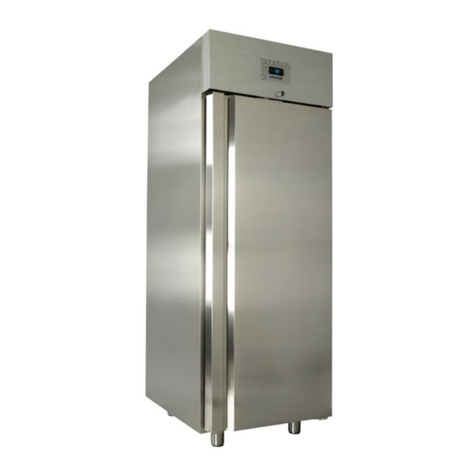
SNAIGE
SNAIGE CC70MF User manual
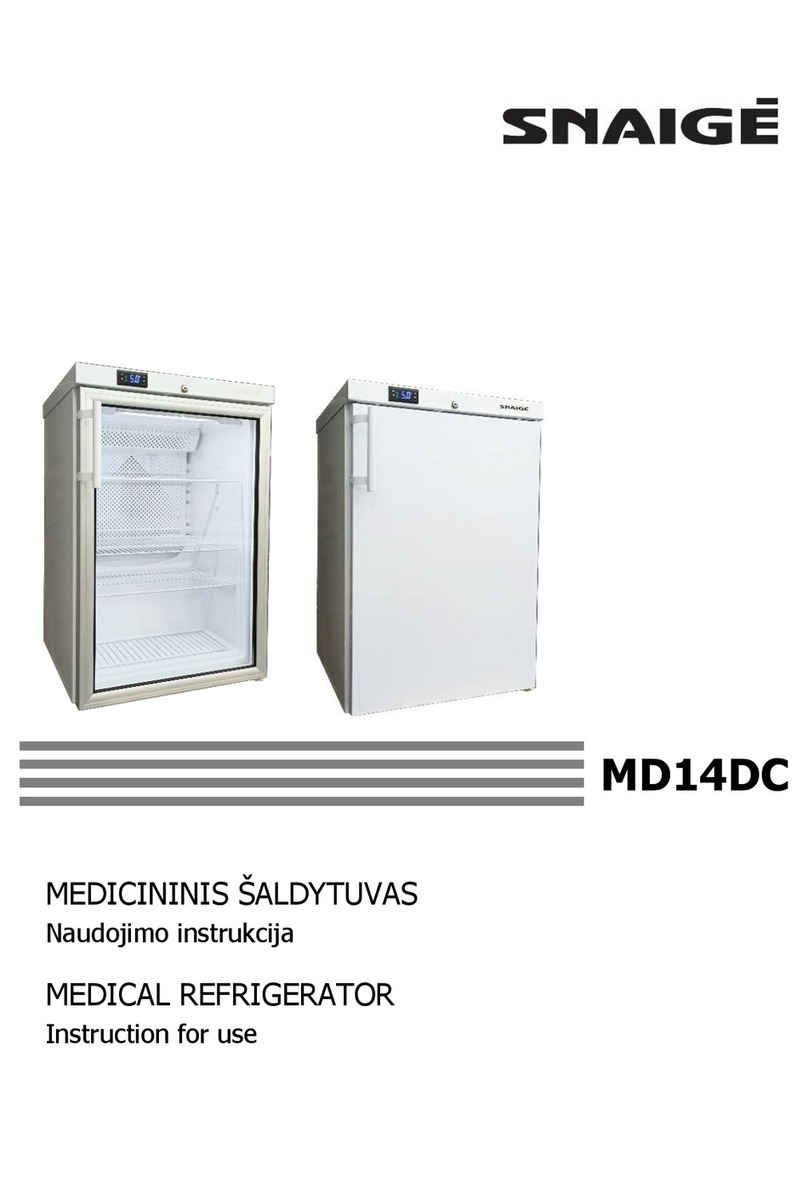
SNAIGE
SNAIGE MD14DC User manual
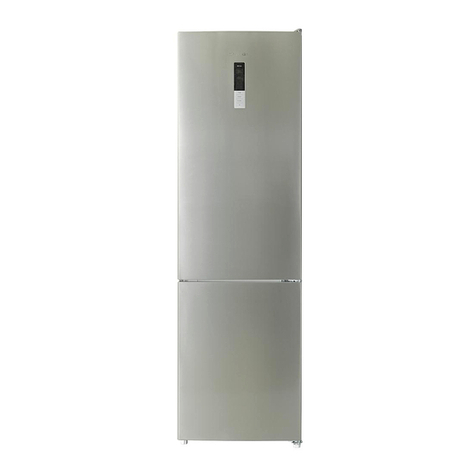
SNAIGE
SNAIGE RF62FB-TNCBNE0 User manual
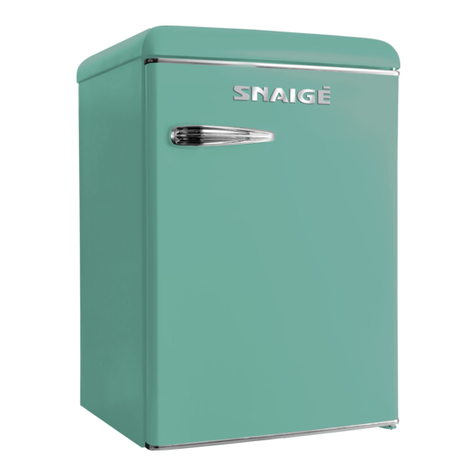
SNAIGE
SNAIGE R 13SM User manual
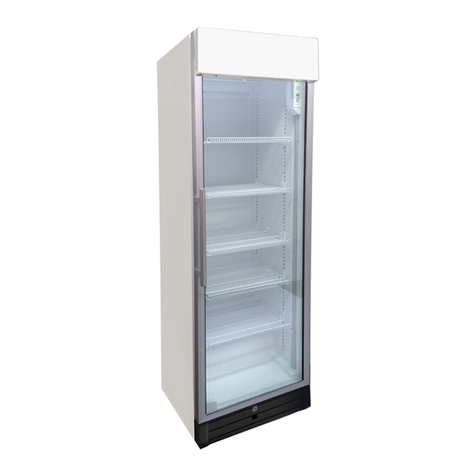
SNAIGE
SNAIGE CD48DM-S300BD User manual

SNAIGE
SNAIGE WD35SM User manual

SNAIGE
SNAIGE CD40DM User manual

SNAIGE
SNAIGE MD40DC User manual
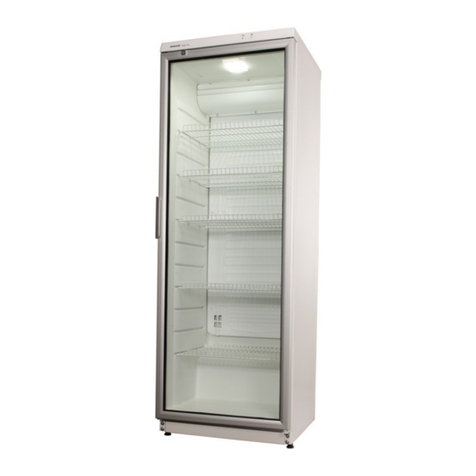
SNAIGE
SNAIGE CD29DM User manual
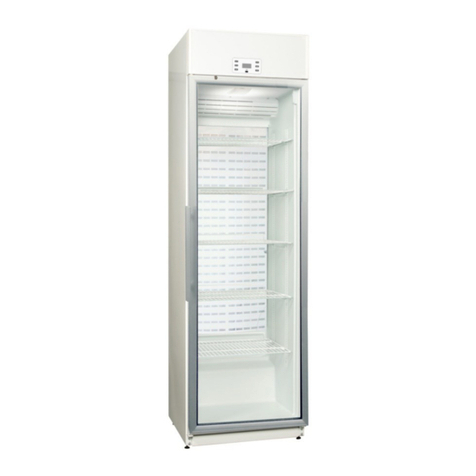
SNAIGE
SNAIGE MD40DD User manual
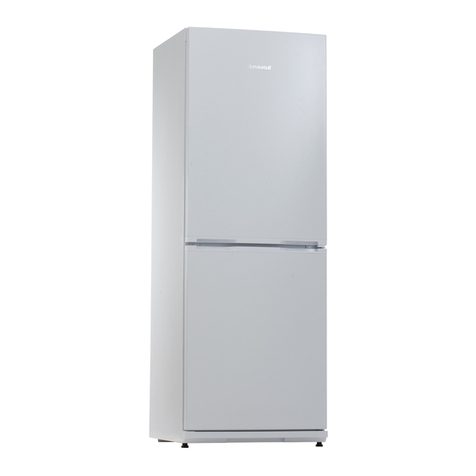
SNAIGE
SNAIGE RF27SM User manual

SNAIGE
SNAIGE R 13SM User manual
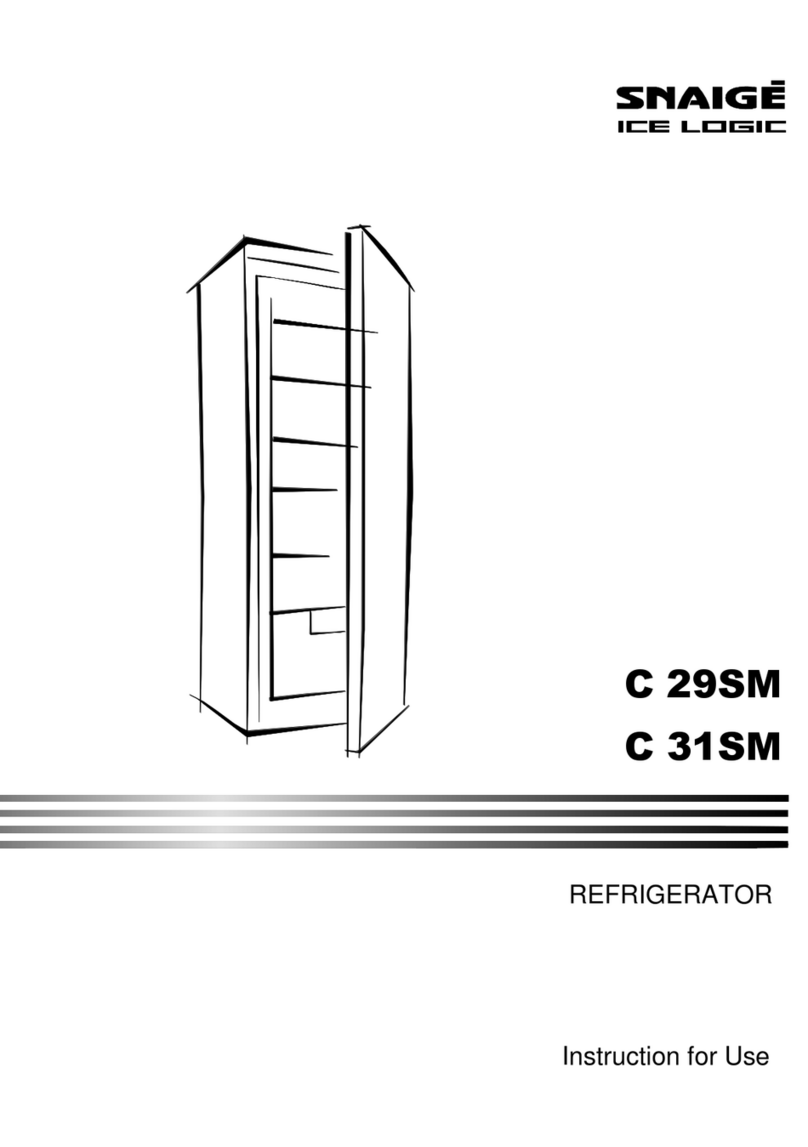
SNAIGE
SNAIGE C 31SM User manual



